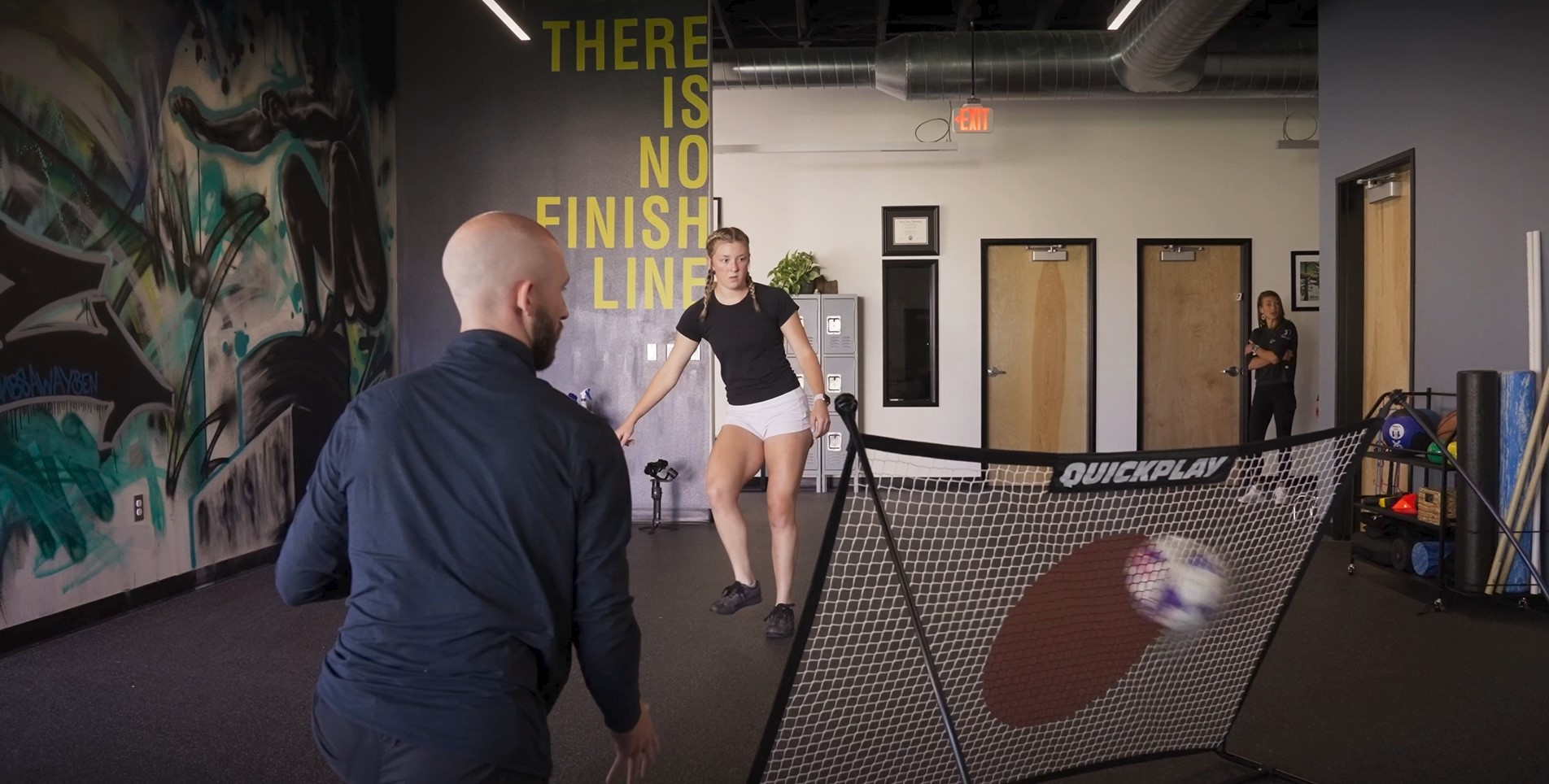Fact or Fiction? Here are the top 10 myths about physical therapy.
MYTH: Physical therapy is only for recovery from surgery, major injuries or debilitating pain.
“I think the biggest myth is that you have to be injured or in pain to come see a physical therapist. The truth is, there’s a lot we can do even if you’re not hurt or in pain. So sometimes people come in, they say, ‘Well, I’ve been having back pain, but I’m not having pain today, so I almost felt like I shouldn’t come in. This feels silly for me to be here.’ But there’s always something that we can look at and improve, and if you’re not in as much pain, your plan of care might look different than if you were in a lot of pain. But there’s still things that we can do to make sure that we’re setting you up for success in the future. Sometimes it’s about pain and injury prevention, too, like if someone knows they’re going to run their first half marathon they can come in here ahead of time so that they know they won’t get injured or end up in pain after their big event.”
— Mindy English, Physical Therapist and Clinic Director at Eagle
“Physical therapy tends to be overlooked when people think, ‘Oh, I’m not injured bad enough so I don’t need physical therapy – it will just get better on its own.’ I think people hesitate to come in because they want to just wait and see. I would like people to understand that physical therapy doesn’t have to be a really involved, extensive process – if you jump in early to get an idea of what’s going on with your body, you can get ahead of any injuries and really prevent the need for a long physical therapy course of treatment. You can prevent a lot of the chronic, repetitive injury states that many people who wind up in PT find themselves in. Also, while we treat all musculoskeletal conditions – everything from head to toe – we also treat things you don’t think about such as balance issues, TMJ and men’s pelvic health. I encourage people to go to physical therapy sooner rather than later and capitalize on these services we have to offer.”
– Devin Langaker, Physical Therapist at Shoreline.

Want to know more?
Explore all the reasons why you should Choose Physical Therapy.
MYTH: You need to have an X-ray or an MRI before physical therapy.
“People think that they should wait until after they have imagery (X-rays, MRI) before they start PT. The misconception is that what shows up on the images might drastically change your physical therapist’s approach to treatment. However, with our clinical testing/clinical reasoning, PTs are often able to start people with treatment that can improve their symptoms right away. Plus, imagery research has shown a poor correlation between findings on imagery and symptoms/pain.”
— Robb Jacobs, Physical Therapist and Clinic Director at Yakima and Selah.
Want to know more?
Check out our blog discussing what a positive MRI really means.
MYTH: Physical therapy hurts.
“People often say they’ve heard that PT interventions are always painful. There’s this ‘no pain, no gain’ message when in reality while some things might be temporarily painful when we are working to restore mobility – such as after a major injury or surgery – in general, physical therapists are experts at finding pain-free ways for you to reach your rehabilitation goals.”
— Jennifer Kearsley, Physical Therapist and Clinic Director at St. Johns

Want to know more?
Check out our blog — No Pain No Gain.
MYTH: If I go to PT, they’ll make me stop doing my sport/activity.
“Depending on a patient’s individual circumstances, rest or cutting back on an activity or sport may be a necessary part of the recovery process, but in a lot of instances physical therapists are able to come alongside them and guide them in how to move differently or more efficiently in that sport or that activity to keep them doing what they love. If they do have to take a break, we work hard to get them back to it as soon as safely possible.”
— Jonny Arnold, Physical Therapist at OMG Southtowne.
Want to know more?
Check out this inspiring patient success story spotlighting how Jonny was able to work with a young dancer to not only keep her dancing, but to empower her to reach the next level — From Pain to Platinum.
MYTH: PT is one-size-fits-all.
“As physical therapists, we are dedicated to helping our patients get back to the things they love. Each PT session includes ongoing assessment and design of a unique, personalized program tailored to meet individual goals. Our approach ensures that patients receive the treatment and care that works for them and gets them to their goals. Throughout the course of care, we ask questions to learn what a patient feels is working and what they feel needs a little help. And then we continue to redesign and fine-tune thing so they can get back to what they want to do.”
— Kyle Stewart, Physical Therapist and Pasco Clinic Director.

Want to know more?
Review our blog highlighting the value of Shared Decision Making to learn more about how our PTs prioritize patient-centered, collaborative care.
MYTH: PT will only delay the inevitable surgery.
“One of the comments I hear from my patients is ‘Why am I here for PT? It’s only going to delay inevitable surgery!’ What is actually true is that physical therapy provided by a knowledgeable therapist and performed correctly and consistently at home can help patients get back to the activities they want to do. Physical therapy can often help eliminate pain that gets in the way of these desired activities. Additionally, an experienced provider will usually know within the first few visits if a patient is appropriate for continued conservative care, or if they are a better surgical candidate. As you put your trust in us as your musculoskeletal expert, we can help you know which path is the right path for you to take.”
— Jeff Blanchard, Physical Therapist and clinic director at South Salem
Want to know more?
Visit our Pre- and Post-Operative Services page!
Check out our blog — Why PT is Important Before You Have Surgery.
Read about how physical therapy helped one patient avoid surgery altogether after a traumatic knee injury – Charlie’s Patient Success Story.
MYTH: It is too late for physical therapy because my issue has been going on for too long.
“More than half of our patients come to physical therapy for persistent or chronic issues! While we do know that early access to PT results in a quicker recovery, that doesn’t mean delayed PT won’t be effective if you have waited a while to seek care. In fact, PT is your best option to diagnose muscle imbalances and help address the compensations your body may have been making for the months or years that you have been dealing with your symptoms!”
– Anne Jeffery, Physical Therapist and Newberg Clinic Director

Want to know more?
Many of our Patient Success Stories illustrate the power of physical therapy whether you’re facing an acute injury or chronic condition.
MYTH: Insurance does not cover physical therapy, and it is too expensive!
“Whether insurance coverage is provided by an employer or bought independently on the marketplace, vast differences exist between companies, policies and plans. Therefore, every patient has different circumstances, and it is best not to assume physical therapy won’t be covered by your insurance. It is also important not to let a lack of understanding of – or confidence in – your insurance stand in your way of getting started with PT. A question about insurance that often comes up when a person first contacts one of our clinics to begin their physical therapy journey is whether we ‘accept’ or ‘take’ their insurance. Our staff is always happy to help make sure you are maximizing your benefits and finding what best suits your financial circumstances. If you are one of the few whose insurance does not include physical therapy benefits, direct access laws still allow you to see any physical therapist you choose and even without insurance coverage, physical therapy is usually the most cost-effective choice to address musculoskeletal issues.”
— Kevin Norris, Physical Therapist and Clinic Director at North Creek and Juanita
Want to know more?
Check out our Insurance 101 blog to learn about navigating commercial healthcare benefits.
Watch this video summarizing the findings from a new report by the American Physical Therapy Association that shows the economic value of physical therapy in the United States.
MYTH: You need a referral for physical therapy, and you can only go to the physical therapist who you are referred to.
“People often believe, and are sometimes told by their physicians, that they need a referral for physical therapy and that they have to go where they are referred for treatment. However, direct access is state law effective in all 50 states and the District of Columbia that gives people the right to PT care without a referral, as well as the right to choose their physical therapy provider! While doctors might recommend or refer to a certain PT practice, it is your choice as the patient to work with the provider who best meets your needs. Most, but not all, insurance plans include direct access coverage for physical therapy, though we recognize there are also cost considerations when it comes to a PT provider being in-network or out-of-network with your carrier.

Whatever brings you to physical therapy, we want your experience to be exceptional and for you to reach your goals as efficiently as possible, while also saving as much time and financial resources as possible. Whether you are a first-time patient of physical therapy or a loyal, returning customer, we want you to know we’re here for you and you have the right to choose us for your PT journey!”
– Anne Jeffery, Physical Therapist and Newberg Clinic Director
Want to know more?
Read our blog — 5 Facts About the Benefit of Direct Access to Physical Therapy, and review the FAQ section on our Direct Access page.
MYTH: PT is just exercise and stretching, and I can do that at home.
“Physical therapy practice goes well beyond exercises that can be done at home. While targeted exercises are certainly part of rehabilitation, they are only one tool in our box. PTs are musculoskeletal experts who assess and diagnose movement issues, develop custom, personalized treatment plans, provide effective hands-on manual therapy techniques, and facilitate patient understanding of safe movement and how to prevent injuries with proper body mechanics. Additionally, we utilize specialized equipment and modalities designed to improve functional outcomes that are often not available for home use.”
– Kyle Stewart, Physical Therapist and Pasco Clinic Director.
Want to know more?
Review our webpage that uncovers Why Choose Physical Therapy, and learn more about the wide range of services we offer to help patients.
Read our blog — 5 Things You Didn’t Know Physical Therapists Treat.
